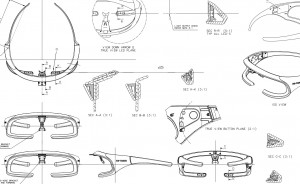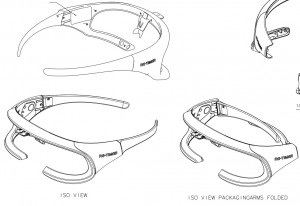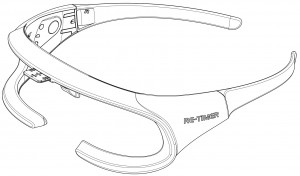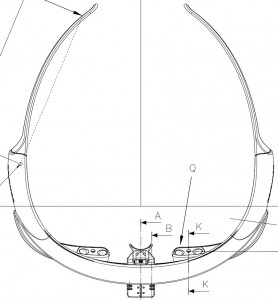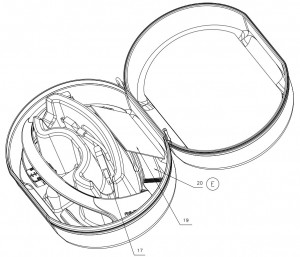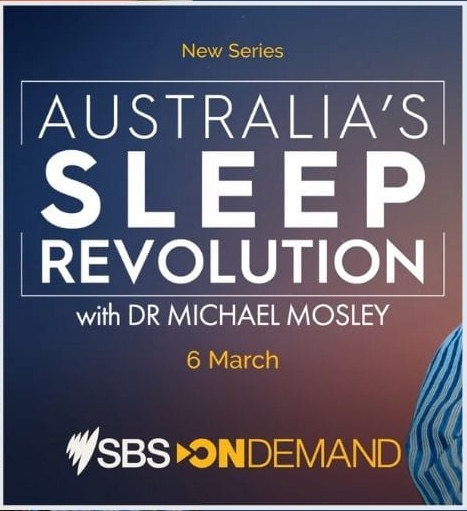Research from the inventors
Wright HR, Lack LC & Partridge KJ, ‘Light emitting diodes can be used to phase delay the melatonin rhythm’, Journal of Pineal Research, 2001, 31:350–355.
Objective: The aim of this study was to compare the effect of a portable light source with that of a conventional light box in suppressing nocturnal salivary melatonin and phase shifting dim light melatonin onset (DLMO), a phase marker of the circadian system [Lewy and Sack 1989].
Method: Two portable light sources, comprising light-emitting diodes (LEDs) of two different wavelengths, were compared to a standard light box in suppressing and phase shifting nocturnal salivary melatonin. All light sources were equated for illuminance of 2000 lux. Sixty-six volunteers participated in the two-day study and were randomly allocated to one of four conditions: light box, white LED, blue-green LED, or no light control group. Light was administered to the experimental groups from midnight to 02.00 on the first night.
Half-hourly saliva samples were collected from 19.00 to 02.00 on night 1 and until 01.00 on night 2. Per cent melatonin suppression on night 1 and dim light melatonin onset (DLMO) for each night were calculated.
Conclusion:
The experimental groups showed significant melatonin suppression during light stimulation, with the blue-green LEDs producing the greatest (70%) suppression.
There was no significant difference between the light box at 63% and white LED at 50% suppression. Similarly, the blue-green LED had a significantly greater DLMO delay of 42 minutes and there was no difference between the light box of 23 minutes and the white LED of 22 minutes. These data suggest the portable LED light source is an effective way of delivering light to phase shift the melatonin rhythm, with the blue-green LED being the more effective of the two LEDs.
https://pubmed.ncbi.nlm.nih.gov/11703565/
Wright, HR, Lack, LC & Kennaway, DJ, ‘Differential effects of light wavelength in phase advancing the melatonin rhythm’, Journal of Pineal Research, 2004, 36:140–144.
Objective: Shorter wavelength light has been shown to be more effective than longer wavelengths in suppressing nocturnal melatonin and phase-delaying the melatonin rhythm. In the present study, different wavelengths of light were evaluated for their capacity to phase advance the saliva melatonin rhythm.
Method: Light was administered via a portable light source comprising two light-emitting diodes per eye, with the irradiance of each diode set at 65 lW/cm2. Forty-two volunteers participated in up to six conditions resulting in 15 per condition. For the active light conditions, a 2-hour light pulse was administered from 06.00 on two consecutive mornings. Half-hourly saliva samples were collected on the evening prior to the first light pulse and the evening following the second light pulse.
Conclusion:
The shorter wavelengths of 470, 495 and 525 nm showed the greatest melatonin onset advances ranging from approximately 40 to 65 minutes while the longer wavelengths produced no significant phase advance.
These results strengthen earlier findings that the human circadian system is more sensitive to the short wavelengths of light than the longer wavelengths.
https://pubmed.ncbi.nlm.nih.gov/14962066/
Lack, L, Bramwell, T, Wright, H & Kemp, K, ‘Morning blue light can advance the melatonin rhythm in mild delayed sleep phase syndrome’, Sleep and Biological Rhythms 2007, 5: 78–80
Objective: We investigated the effectiveness of morning blue light in advancing the sleep and melatonin rhythm of individuals with mild delayed sleep phase syndrome.
Method: The 18 participants were randomly allocated to a light or control group. Wake-up times were gradually advanced to 06.00 over a week, during which the light group also received two hours of blue light immediately after waking. During the treatment week that followed, the blue light group was exposed to two hours of blue light each morning, starting immediately after waking up. The portable light source comprised blue light LEDs (470 nm peak wavelength with irradiance of 65 μW/ cm2) attached to the lower rims of spectacle frames.
Conclusion:
The blue light group showed a significant 2.53-h advance of dim light melatonin onset,
compared to no change in the control group. However, neither group had a significant advance of sleep times following treatment. Effective delayed sleep phase syndrome treatment may require adjunct behavioral instructions.
https://onlinelibrary.wiley.com/doi/full/10.1111/j.1479-8425.2006.00250.x
Wright HR, Lack LC, ‘Effect of light wavelength on suppression and phase delay of the melatonin rhythm’, Chronobiology International, 2001 Sept., 18 (5): 801–8
Objective: Different wavelengths of light were compared for melatonin suppression and phase shifting of the salivary melatonin rhythm. The wavelengths compared were 660 nm (red), 595 nm (amber), 525 nm (green), 497 nm (blue/green), and 470 nm (blue).
Method: Volunteers were administered with light-emitting diodes equated for irradiance of 130 muW/cm2. Fifteen volunteers participated in all five wavelength conditions and a no light control condition, with each condition conducted over two consecutive evenings. Half-hourly saliva samples were collected from 19.00 to 02.00 on night 1 and until 01.00 on night 2. Light was administered for the experimental conditions on the first night only from midnight to 02.00.
Conclusion:
Percentage melatonin suppression on night 1 and dim light melatonin onset (DLMO) for each night were calculated.
The shorter wavelengths of 470, 497, and 525 nm showed the greatest melatonin suppression – 65% to 81%.
The shorter wavelengths also showed the greatest DLMO delay on night 2 – ranging from 27 to 36 minutes. The results were consistent with the involvement of a scotopic mechanism in the regulation of circadian phase.
https://pubmed.ncbi.nlm.nih.gov/11763987/
Olsen B, Szkibik N & Chau A, ‘Green light is effective in advancing the timing of sleep onset and increasing duration of sleep’, 2013 August.
Note: This study was a non-clinical consumer trial and has not been published in a scientific journal or peer-reviewed.
Objective: We investigated the ability of green light to advance sleep onset to an earlier time and increase sleep duration. The 24 participants were asked to nominate their current sub-optimal sleep–wake times and their preferred earlier or ideal sleep–wake times. A custom schedule was prepared for participants detailing the times to wear Re-Timer.
Method: During the treatment week participants were asked to use the green light device for 50 minutes each 24-hour period for 7 days. All participants used the device in the morning shortly after waking (M = 8.42 am, SD = 2.23 hours). Wake-up times and exposure to green light were gradually advanced by an average of 8 minutes each morning, starting from each participant’s usual wake-up time. The choice of bedtime and wake-up times across the week were self-selected. Participants were asked to use the device for only 50 minutes at the prescribed time. After waking, all participants followed their usual morning routine while wearing the Re-Timer device. Participants recorded their sleep–wake routine during the treatment week in a sleep diary. The study was carried out in winter with morning light levels
Conclusion:
Baseline data provided by participants prior to the trial showed the average sleep onset time was 1.47 (SD = 82 minutes). The average preferred sleep onset time participants wanted to achieve was 23.00 (SD = 56 minutes). This would be an average advance in sleep onset of 2 hours and 47 minutes, a significant change in the circadian clock. 92% (n = 22) achieved a movement towards their preferred sleep onset time; 8% did not realize any movement in their sleep onset time.
An average advance of 2 hours and 30 minutes was achieved across the sample (n = 24).
For green light to be considered an effective treatment option, duration of sleep should either be constant or increase as sleep onset time advances. Reduced sleep duration would result only in sleep debt.
Average sleep duration before the study was 7.1 hours (SD = 1.4 hours). On the 7th day of use, average sleep duration of participants was 7.8 hours (SD = 1.92 hours), an increase over the baseline measure by 0.7 hours (42 minutes).
Lovato N, Lack L, ‘Circadian phase delay using the newly developed Re-Timer portable light device’, 2015 October
Objective: Appropriately timed exposure to bright light has been shown to phase shift the circadian rhythm and alleviate associated sleeping difficulties. This study evaluated the effectiveness of a newly developed Re-Timer portable light device for phase delaying the circadian rhythm.
Method: Participants included 12 healthy, good sleepers (M = 32.3 years, SD = 12.5, male = 5). A repeated measures counterbalanced design was used to assess circadian phase delay following the use of either the re-timer or no device on two consecutive evenings. Outcome measures included dim light melatonin onset (DLMO), subjective sleepiness, and adverse effects of the Re-Timer. Analyses revealed a significant phase delay of DLMO following use of the re-timer (M = 46 min, SD = 76 min) on two consecutive evenings when compared to no light control (M = 3 min, SD = 81 min; p = .016).
Conclusion: There was a trend for evening subjective sleepiness to decrease after using the Re-Timer compared to no light control, however this trend was not statistically significant. The Re-Timer device is an effective method of delaying the circadian rhythm in good sleepers.

